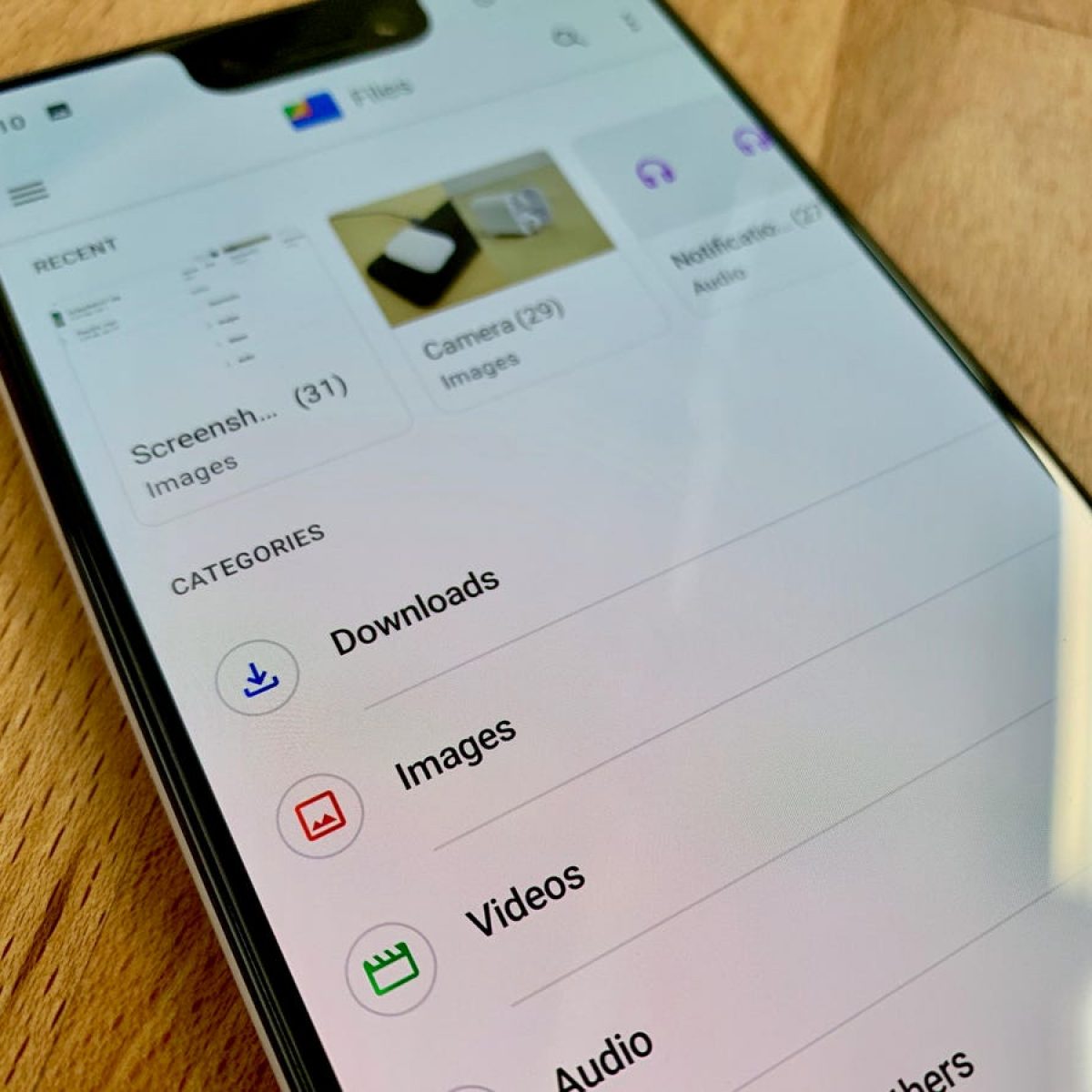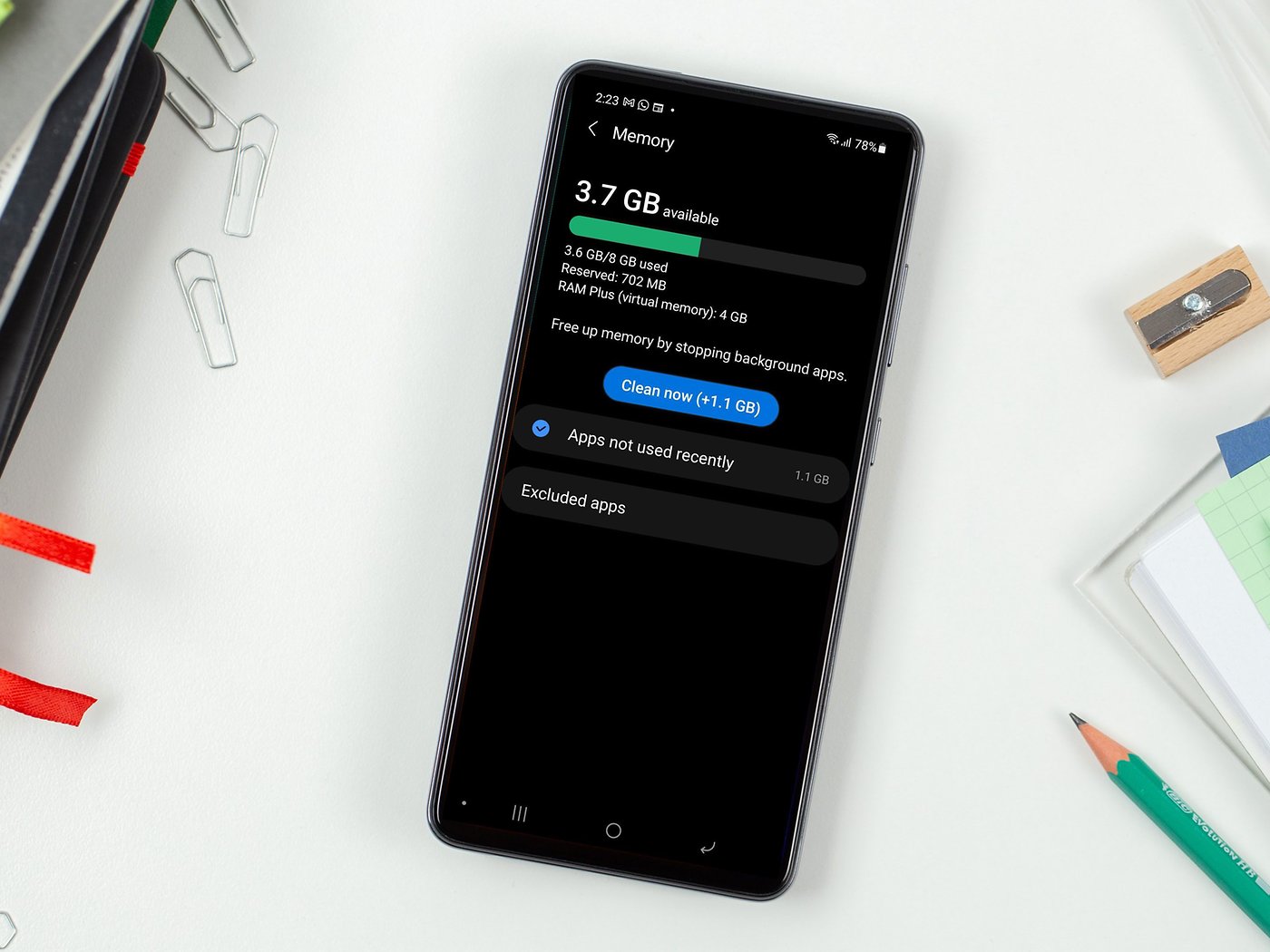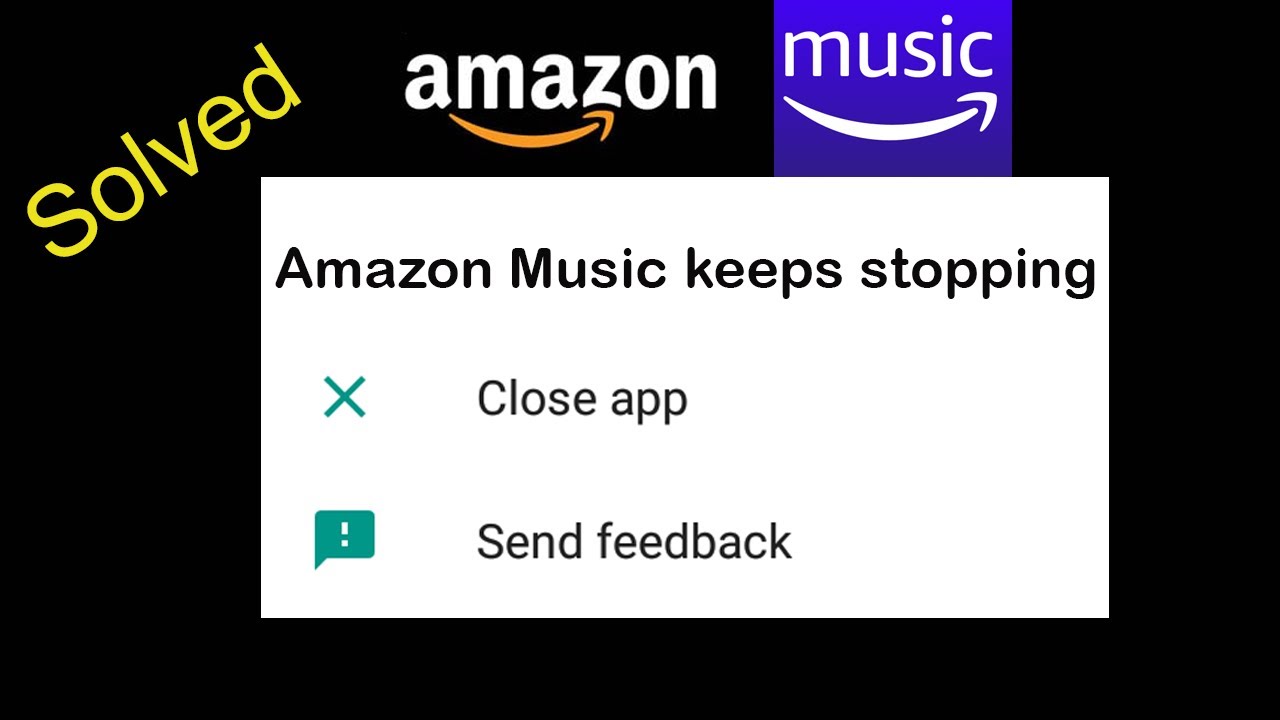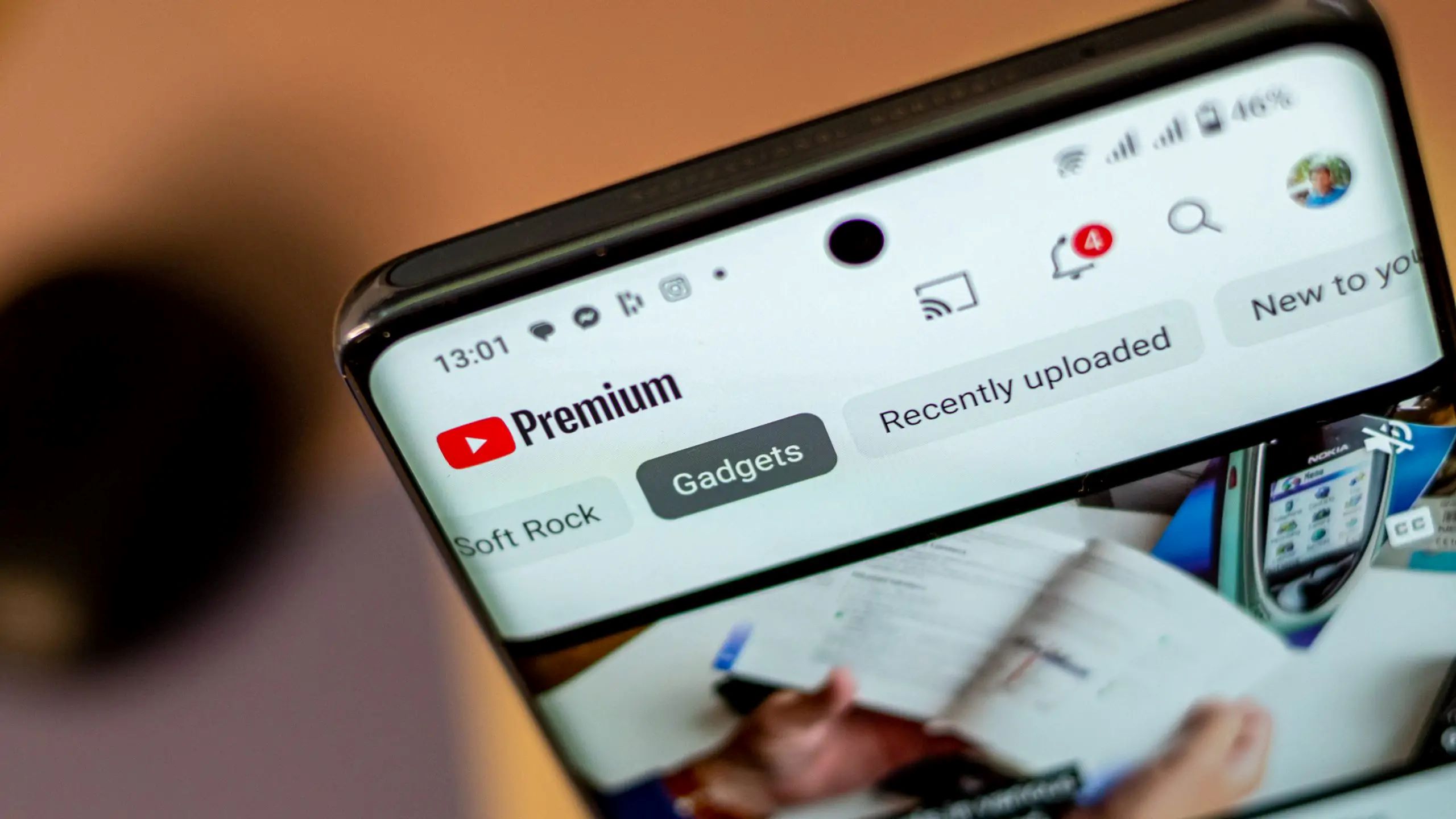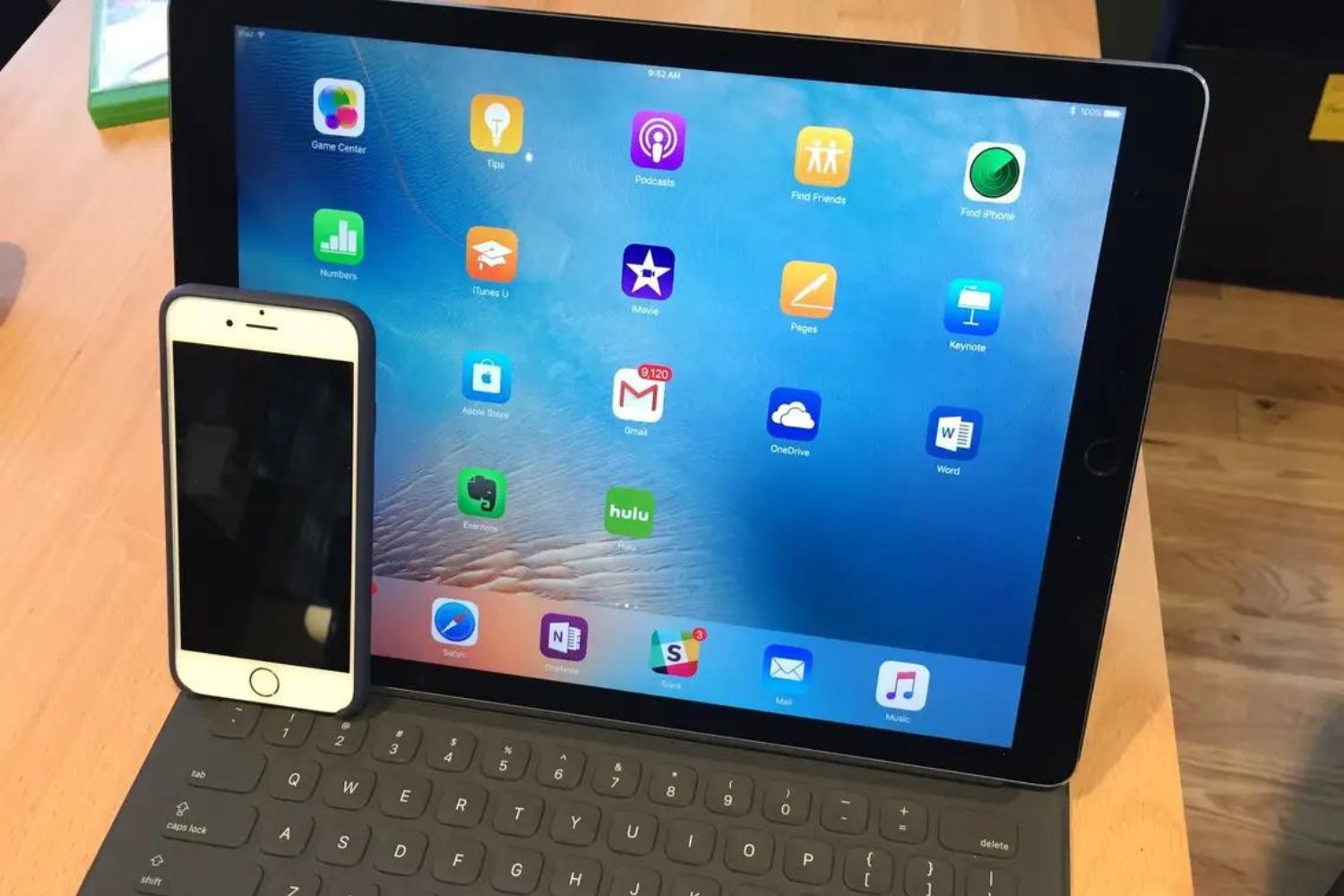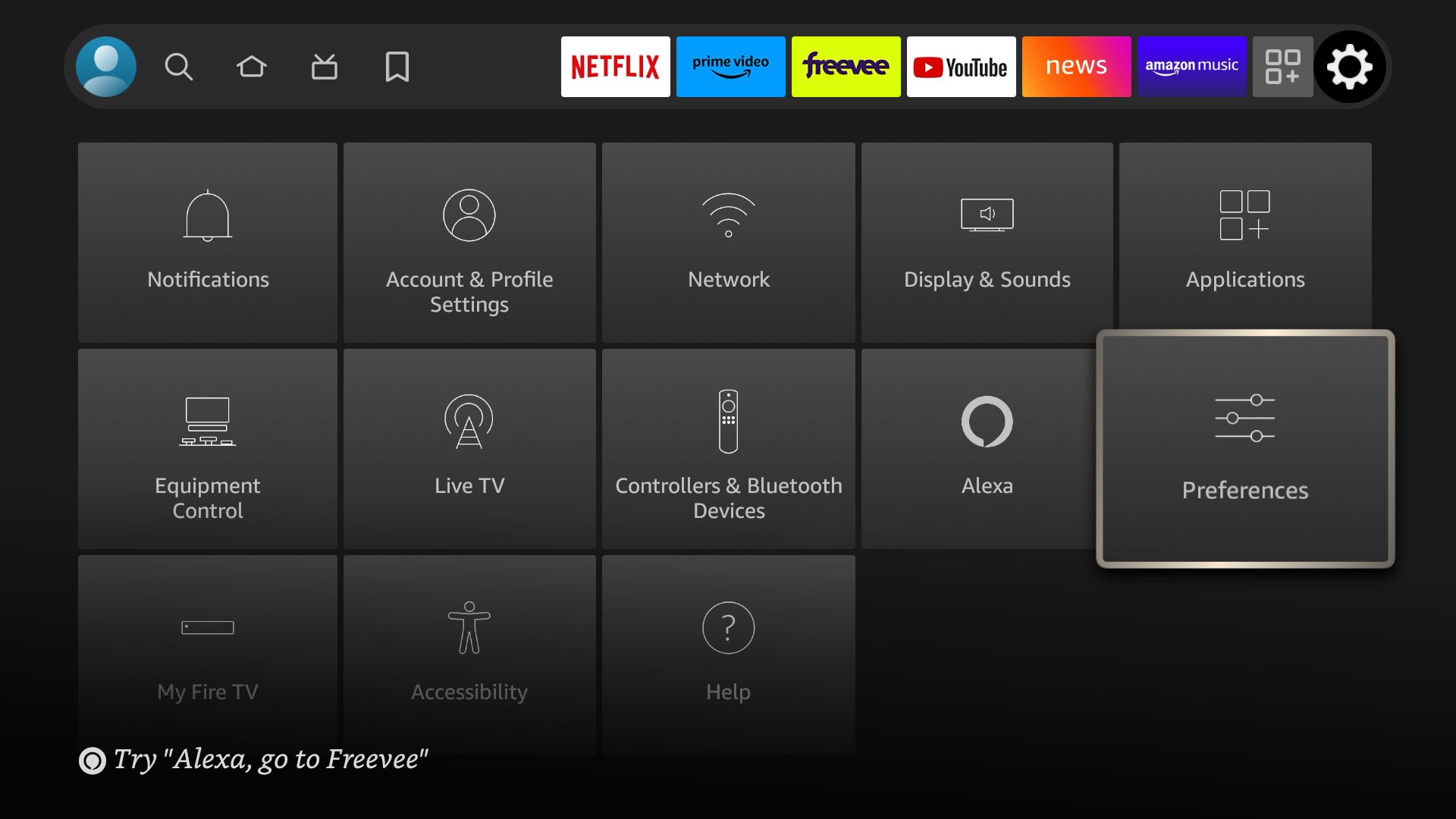Introduction
Downloading files on your Android phone can be convenient and useful for accessing various types of content such as apps, videos, music, and documents. However, there may be times when you want to stop or cancel a download due to various reasons, such as limited storage space, slow internet connection, or simply changing your mind.
In this article, we will explore a range of methods and techniques to help you stop a download on your Android phone. These methods are applicable to various Android devices, including smartphones and tablets, and can be used for both downloads initiated through browsers or apps.
It’s important to note that the specific steps and options may vary slightly depending on the device model, Android version, and the apps installed on your phone. Nonetheless, the methods shared here are commonly used and should work for most Android users.
By following the techniques outlined in this article, you can regain control over your downloads and effectively manage your device’s storage and data usage. Whether you need to stop a large file download, pause an app update, or cancel a download that you no longer need, these methods will come in handy.
Now, let’s dive into the various methods available to stop a download on your Android phone!
Common Methods to Stop a Download on Android Phone
When it comes to stopping a download on your Android phone, there are several common methods you can try. These methods include canceling the download from the notification panel, using the Downloads app, force stopping the downloading app, disabling or uninstalling the app, clearing app data and cache, disabling background data, turning off automatic updates, restricting data usage for specific apps, using a download manager app, and enabling airplane mode.
Cancel the Download from Notification Panel: If you’re currently downloading a file, you can swipe down the notification panel and locate the download notification. From there, simply tap on the download notification and select the option to cancel or stop the download.
Use the Downloads App: Your Android phone may have a built-in Downloads app where all your downloaded files are saved. Open the Downloads app and find the file you want to stop the download for. Tap and hold on the file, then select the option to cancel or delete the download.
Force Stop the Downloading App: If the download is being performed through a specific app, you can force stop that app to halt the download. Open the Settings app, go to the “Apps” or “Applications” section, find the app responsible for the download, and tap on it. From there, select the option to force stop the app.
Disable or Uninstall the App: Another option is to disable or uninstall the app that initiated the download. Open the Settings app, go to the “Apps” or “Applications” section, find the app, and tap on it. Then, select the option to disable or uninstall the app. This will not only stop the current download but also prevent any future downloads from that app.
Clear App Data and Cache: Sometimes, clearing the app data and cache can help stop a download. Open the Settings app, go to the “Apps” or “Applications” section, find the app, and tap on it. Then, select the option to clear the app data and cache.
Disable Background Data: By disabling background data for specific apps, you can prevent them from using cellular or Wi-Fi data in the background, which includes downloads. Open the Settings app, go to the “Network & internet” or “Connections” section, and select “Data usage” or a similar option. From there, find the app you want to restrict background data for and toggle the setting accordingly.
Turn off Automatic Updates: Some apps have the option to update automatically in the background. By turning off this feature, you can prevent any ongoing downloads related to app updates. Open the Google Play Store app, tap on the menu icon (usually three horizontal lines), go to “Settings,” and select “Auto-update apps.” From there, choose the option to “Don’t auto-update apps” or “Auto-update apps over Wi-Fi only.”
Restrict Data Usage for Specific Apps: You can also restrict the data usage for specific apps, which includes downloads. Open the Settings app, go to the “Network & internet” or “Connections” section, and select “Data usage” or a similar option. From there, find the app you want to restrict data usage for and set a data limit or disable background data for that app.
Use a Download Manager App: If you frequently download large files and want more control over your downloads, consider using a download manager app from the Google Play Store. These apps provide features such as pausing, resuming, and canceling downloads, as well as organizing and managing downloaded files.
Enable Airplane Mode: Enabling Airplane mode on your Android phone will disable all network connections, including cellular data and Wi-Fi. This can be an effective way to stop any ongoing downloads. Simply swipe down the notification panel, tap on the Airplane mode icon or toggle, and wait for the network connections to turn off.
By utilizing these common methods, you can successfully stop downloads on your Android phone, ensuring optimal management of your device’s resources and data usage.
Method 1: Cancel the Download from Notification Panel
One of the simplest and quickest ways to stop a download on your Android phone is by canceling it directly from the notification panel. This method is especially useful when you are downloading a file and want to immediately halt the process.
Here’s how you can cancel a download from the notification panel:
- Swipe down from the top of your screen to open the notification panel.
- Look for the download notification. It may appear as a progress bar with the name of the file being downloaded. Alternatively, it can also be a simple notification stating that a download is in progress.
- Tap on the download notification. This action will expand the notification and provide you with more details about the ongoing download.
- Within the expanded notification, you should see an option to cancel or stop the download. It might be represented by an “X” icon, a trash bin symbol, or it could simply say “Cancel.”
- Tap on the cancel or stop option to halt the ongoing download. Depending on your device and Android version, you may need to confirm the cancellation through a pop-up dialog box.
By following these steps, you will successfully cancel the download from the notification panel, effectively stopping the download process on your Android phone.
Please note that canceling the download from the notification panel only stops the specific download you selected. If you have other ongoing downloads, they will continue unless you repeat the process for each individual download.
This method works for downloads initiated through various sources, including web browsers, apps, and even system updates. It provides a convenient way to quickly halt downloads without having to navigate through different settings or apps.
Keep in mind that canceling a download means that you will need to start the process again if you want to download the same file in the future. So, be sure that canceling the download is what you really want before proceeding.
Now that you know how to cancel a download from the notification panel, you can easily stop any ongoing downloads on your Android phone with just a few taps.
Method 2: Use the Downloads App
If you’re looking for an alternative method to stop a download on your Android phone, using the built-in Downloads app can be a convenient option. The Downloads app provides a centralized location where you can manage and control all your downloaded files.
Here’s how you can stop a download using the Downloads app:
- Locate and open the Downloads app on your Android phone. The app icon usually resembles a downward-pointing arrow within a white or blue square.
- Once you have opened the app, you will be presented with a list of all your downloaded files. Browse through the files to find the one you wish to stop the download for.
- Tap and hold on the file to select it. This action will bring up a menu of options specific to that file.
- Within the menu, you will find an option to cancel or delete the download. This option could be represented by an “X” icon, a trash bin symbol, or it may simply say “Cancel” or “Delete.”
- Select the cancel or delete option to stop the download. Depending on the file size and your device’s performance, it may take a moment to completely halt the download process.
Upon completing these steps, you will successfully stop the download using the Downloads app. The file will no longer be downloaded, and any partially downloaded portions will be discarded.
Keep in mind that canceling the download using the Downloads app only applies to the selected file. If you have multiple downloads in progress, you will need to repeat these steps for each individual file you wish to stop.
The Downloads app is a handy tool not only for stopping downloads but also for managing your downloaded files. You can use this app to view and organize your downloaded content, open files with compatible apps, or even delete files you no longer need.
Additionally, some Android devices may have a more integrated approach, where the Downloads app is accessible directly from the notification panel. In such cases, you can follow the same steps mentioned above by tapping on the download notification and selecting the option to cancel or delete the download.
By utilizing the Downloads app, you have a centralized and easy-to-use solution for managing and stopping downloads on your Android phone.
Method 3: Force Stop the Downloading App
If you’re unable to stop a download using the notification panel or Downloads app, another effective method is to force stop the app responsible for the download. By force stopping the app, you can abruptly halt all its processes, including the ongoing download.
Here’s how you can force stop the downloading app:
- Open the Settings app on your Android phone. You can usually find the Settings app in your app drawer or by swiping down the notification panel and tapping on the gear-shaped icon.
- Scroll down and look for the “Apps,” “Applications,” or “Application Manager” option. The specific wording may vary depending on your device’s manufacturer and Android version.
- Tap on the appropriate option to view a list of all the apps installed on your phone.
- Scroll through the list and locate the app that is currently downloading the file you want to stop. You can search for the app manually or use the search bar at the top of the screen.
- Tap on the app to access its information and settings.
- Within the app settings, look for the “Force stop” option. It is typically located towards the top of the screen.
- Tap on “Force stop” and confirm your action when prompted.
By following these steps, you will force stop the app responsible for the ongoing download, effectively stopping the process altogether.
Please note that force stopping an app may have additional consequences. It may close any other tasks or processes related to the app, and it could potentially disrupt the app’s normal functioning. Therefore, this method should be used judiciously, especially for system apps or critical applications that are necessary for your device’s operation.
Once the app has been force stopped, any ongoing downloads initiated through that app will be immediately halted. However, keep in mind that it may not permanently prevent the app from initiating downloads in the future, as some apps automatically resume downloads upon relaunching.
Keep in mind that force stopping an app may not be available for all apps, especially those that are integral to the operating system or pre-installed by the device manufacturer. In such cases, you may need to explore other methods to stop the download, such as disabling or uninstalling the app.
By using the force stop method, you can take control of the downloading app and stop any ongoing downloads on your Android phone with ease.
Method 4: Disable or Uninstall the App
If you’re unable to stop a download or if the download persists even after force stopping the app, another effective method is to disable or uninstall the app responsible for the download. By taking this approach, you can not only stop the ongoing download but also prevent any future downloads initiated by that app.
Here’s how you can disable or uninstall the app:
- Open the Settings app on your Android phone.
- Scroll down and look for the “Apps,” “Applications,” or “Application Manager” option, depending on your device.
- Tap on the appropriate option to view a list of all the apps installed on your phone.
- Scroll through the list to find the app that is currently downloading the file you want to stop.
- Tap on the app to access its information and settings.
- Depending on your Android version and device, you will have the option to either disable or uninstall the app.
- If the option to disable the app is available, tap on “Disable” and confirm your action when prompted.
- If the option to uninstall the app is available, tap on “Uninstall” and follow the on-screen instructions to complete the uninstallation process.
By following these steps, you can effectively disable or uninstall the app responsible for the ongoing download. This action will not only stop the current download but also prevent any future downloads initiated through that app.
It is important to note that disabling or uninstalling an app may have consequences beyond stopping downloads. Disabling an app will render it inactive and remove it from your app drawer and home screen, but the app’s data and settings will still remain on your device. On the other hand, uninstalling an app will completely remove it from your device, including all associated data and settings.
Before disabling or uninstalling an app, consider the implications it may have on your device’s functionality and any other features that rely on that app. Be cautious when dealing with system apps or critical applications that are essential for your device’s proper operation.
If you decide to disable an app and later want to re-enable it, you can do so by following similar steps and selecting the “Enable” option instead.
By disabling or uninstalling the app, you have full control over stopping the ongoing download and preventing future downloads from that app on your Android phone.
Method 5: Clear App Data and Cache
If you want to stop a download on your Android phone and also remove any residual files associated with the downloading app, clearing the app data and cache can be a useful method. This process essentially resets the app to its initial state and removes any temporary files and data that might be causing the download to continue.
Here’s how you can clear app data and cache:
- Open the Settings app on your Android phone.
- Scroll down and look for the “Apps,” “Applications,” or “Application Manager” option, depending on your device.
- Tap on the appropriate option to view a list of all the apps installed on your phone.
- Scroll through the list to find the app that is currently downloading the file you want to stop.
- Tap on the app to access its information and settings.
- Within the app settings, you will find options such as “Storage” or “Storage & cache.” Tap on this option to proceed.
- You will then see different types of data associated with the app, including “App data” and “Cache.” Tap on the respective options to clear the data and cache.
- Confirm your action when prompted. Keep in mind that clearing the app data will reset any app-specific settings and may delete certain app-related files or user data.
By following these steps, you will clear the app data and cache for the specific app responsible for the ongoing download. This action will not only stop the download but also remove any temporary files or data associated with the app.
Clearing app data and cache can be particularly effective when the app is malfunctioning or encountering issues that prevent the download from stopping. By resetting the app, you essentially start with a clean slate, resolving any problems that might be causing the download to persist.
However, it’s important to note that clearing app data and cache may also remove any saved preferences, login information, or personalized settings associated with the app. If you rely on these settings, be sure to take note of them before proceeding with this method.
After clearing the app data and cache, you may need to relaunch the app and reconfigure any necessary settings or preferences. However, the ongoing download should no longer be active, allowing you to start fresh with the app.
By utilizing the method of clearing app data and cache, you can effectively stop a download and resolve any underlying issues that might be causing it to persist on your Android phone.
Method 6: Disable Background Data
If you want to prevent downloads from occurring in the background on your Android phone, disabling background data for specific apps can be an effective method. By doing so, you can control which apps are allowed to use cellular or Wi-Fi data in the background, ultimately stopping any ongoing downloads initiated by those apps.
Here’s how you can disable background data:
- Open the Settings app on your Android phone.
- Scroll down and look for the “Network & internet” or “Connections” option, depending on your device.
- Tap on the appropriate option to access the network and connection settings.
- Look for the “Data usage” or “Data usage control” option and tap on it.
- In the data usage settings, you will see a list of apps that have access to your cellular or Wi-Fi data.
- Scroll through the list and locate the app that is currently downloading the file you want to stop.
- Tap on the app to access the data usage settings for that specific app.
- Within the app data usage settings, you will find an option to disable background data. Toggle this option off to prevent the app from using data in the background.
By following these steps, you will successfully disable background data for the specific app responsible for the ongoing download. This action will effectively stop any downloads initiated by that app from continuing in the background.
Disabling background data is particularly useful when you want to conserve your data usage or prioritize certain apps over others. By restricting background data, you have more control over which apps are using data and when they are allowed to do so.
Keep in mind that disabling background data for an app may impact its functionality or ability to perform certain tasks when you are not actively using it. Some apps rely on background data to provide timely notifications or updates. Be mindful of the consequences while deciding which apps you disable background data for.
If you decide to re-enable background data for an app in the future, simply follow the same steps and toggle the option back on.
By disabling background data for specific apps, you can effectively stop ongoing downloads and regulate your Android phone’s data usage according to your preferences and priorities.
Method 7: Turn off Automatic Updates
If you’re trying to stop downloads related to app updates on your Android phone, turning off automatic updates can prevent any ongoing downloads from occurring. By disabling this feature, you have more control over when and how your apps are updated, allowing you to stop any downloads that are currently in progress.
Here’s how you can turn off automatic updates on your Android phone:
- Open the Google Play Store app on your Android phone.
- Tap on the menu icon, usually represented by three horizontal lines, located in the top-left corner of the screen.
- Scroll down and select “Settings” from the menu.
- In the Play Store settings, look for the “Auto-update apps” option and tap on it.
- You will see different options related to app updates. Choose either “Don’t auto-update apps” or “Auto-update apps over Wi-Fi only,” depending on your preference.
By following these steps, you can effectively turn off automatic updates on your Android phone, which will prevent any ongoing downloads related to app updates from continuing.
Disabling automatic updates provides you with more control over your device’s data usage, especially if you are on a limited data plan or want to prioritize which apps you update. With this option turned off, you can manually update your apps at your own convenience and avoid any unwanted downloads.
However, it’s important to keep in mind that by disabling automatic updates, you may miss out on important app updates that include bug fixes, security patches, or new features. It is recommended to periodically check for updates manually or enable the option to auto-update apps over Wi-Fi if you prefer to have updates installed without using cellular data.
If you decide to re-enable automatic updates in the future, simply follow the same steps and choose the appropriate option based on your preference.
By turning off automatic updates, you can stop ongoing downloads related to app updates on your Android phone and have greater control over the update process.
Method 8: Restrict Data Usage for Specific Apps
If you want to have more granular control over which apps can use cellular or Wi-Fi data for downloads on your Android phone, restricting data usage for specific apps can be an effective method. By setting data limits or disabling background data for certain apps, you can actively manage and stop ongoing downloads initiated by those apps.
Here’s how you can restrict data usage for specific apps:
- Open the Settings app on your Android phone.
- Scroll down and look for the “Network & internet” or “Connections” option, depending on your device.
- Tap on the appropriate option to access the network and connection settings.
- Look for the “Data usage” or “Data usage control” option and tap on it.
- You will see a list of apps with their respective data usage statistics.
- Scroll through the list and locate the app for which you want to restrict data usage.
- Tap on the app to access its data usage settings.
- Within the app data usage settings, you will find options to set a data limit or disable background data. Adjust these settings according to your preferences to restrict the app’s data usage.
By following these steps, you can successfully restrict data usage for the specific app responsible for ongoing downloads, ultimately stopping the download process.
Restricting data usage for specific apps allows you to prioritize your data allocation and control which apps are allowed to use cellular or Wi-Fi data for downloads. By setting data limits or disabling background data, you can prevent excessive data consumption and manage your data usage effectively.
Keep in mind that restricting data usage for an app may impact its functionality, especially if it relies on background processes or timely updates. Additionally, some apps may find alternative ways to download or update content even with restricted data usage, so this method may not be foolproof for all apps.
If you decide to remove data restrictions for an app in the future, simply follow the same steps and adjust the settings accordingly.
By utilizing the method of restricting data usage for specific apps, you can have more control over ongoing downloads on your Android phone and manage your data usage according to your preferences.
Method 9: Use a Download Manager App
If you frequently download large files or want more control over your downloads on your Android phone, using a dedicated download manager app can be a great option. These apps provide advanced features and functionalities to manage, organize, pause, resume, and stop downloads with ease.
Here’s how you can use a download manager app:
- Go to the Google Play Store on your Android phone.
- Search for and install a reliable and feature-rich download manager app. Some popular options include Advanced Download Manager, IDM Download Manager, or Turbo Download Manager.
- Once the app is installed, open it to access its interface and settings.
- From the main screen or dashboard of the download manager app, you will typically see options to start a new download or view/manage ongoing downloads.
- To stop an ongoing download, locate the respective file in the list of active downloads.
- Tap on the download to select it, and you will see options to pause, resume, or stop the download.
- Select the option to stop the download, and the download manager app will effectively halt the download process.
By following these steps, you can efficiently utilize a download manager app to stop ongoing downloads on your Android phone. These apps offer a user-friendly interface and a range of features to conveniently manage and control your downloads.
Download manager apps provide various advantages, such as the ability to prioritize certain downloads, schedule downloads for specific times, and even categorize and organize downloaded files. Additionally, they often support the resumption of interrupted downloads and allow you to control the maximum download speed.
Remember to choose a download manager app that suits your specific needs and preferences. Read reviews, check the app’s features and compatibility, and ensure that it is from a reputable developer to ensure a positive and secure experience.
By utilizing a download manager app, you can have greater control and flexibility over your downloads, enabling you to stop ongoing downloads whenever necessary and effectively manage your files on your Android phone.
Method 10: Enable Airplane Mode
If you need to stop all ongoing downloads immediately on your Android phone, enabling Airplane mode can be a quick and effective method. Airplane mode disables all network connections on your device, including cellular data, Wi-Fi, and Bluetooth, which effectively halts any ongoing downloads.
Here’s how you can enable Airplane mode:
- Swipe down from the top of your screen to open the notification panel.
- Look for the Airplane mode icon, typically represented by an airplane silhouette. On some devices, you may need to swipe left or right to access additional quick settings icons.
- Tap on the Airplane mode icon to enable it. Once enabled, the icon will turn blue or display a checkmark, indicating that Airplane mode is active.
By following these steps, you will successfully enable Airplane mode on your Android phone, causing all network connections to be disabled.
Enabling Airplane mode is a powerful method to not only stop ongoing downloads but also conserve battery life and eliminate interruptions from calls, messages, or notifications. It’s useful when you want complete disconnection from all network activities.
Please note that with Airplane mode enabled, you will not be able to make or receive calls, send or receive messages, or access the internet until you disable Airplane mode. Additionally, it’s important to consider any potential impact on other functions or applications that rely on network connectivity.
To disable Airplane mode, simply follow the same steps and tap on the Airplane mode icon again. Your device’s network connections will be reestablished, allowing you to resume normal operations.
By enabling Airplane mode, you have a reliable and immediate method to stop all ongoing downloads on your Android phone, ensuring complete disconnection from network activities.
Conclusion
Stopping a download on your Android phone can be necessary for various reasons, such as managing storage space, conserving data usage, or halting unwanted or paused downloads. In this article, we explored ten methods you can use to stop downloads on your Android phone effectively.
We started by canceling downloads from the notification panel or using the Downloads app, leveraging the built-in capabilities of Android. We then delved into more advanced methods, including force stopping the downloading app and disabling or uninstalling it to halt ongoing downloads and prevent future ones.
Additionally, we discussed clearing app data and cache to remove any remnants of the downloading process and disabling background data to restrict specific apps from using data for downloads in the background. We also explored turning off automatic updates and restricting data usage for individual apps to control and manage your downloads more precisely.
Another method we discussed was using a download manager app, which offers advanced features for managing and stopping downloads with ease. Lastly, we explored enabling Airplane mode as a direct way to immediately stop all ongoing downloads on your Android phone.
When implementing these methods, always consider the specific requirements and limitations of your device, Android version, and apps. Some features may vary, and it’s essential to adapt the instructions to your unique setup.
By utilizing the methods discussed in this article, you can confidently take control of your downloads on your Android phone. Whether it’s canceling a single download, managing multiple ongoing downloads, or preventing future downloads, you now have a range of effective techniques at your disposal.
Remember to choose the method that suits your needs, and consider the implications of each method before proceeding. As always, it’s recommended to regularly manage and organize your downloads to maintain a well-optimized and clutter-free Android phone.
Now that you are equipped with these valuable methods, you can confidently manage and stop downloads on your Android phone, ensuring a seamless and efficient experience with your device.







